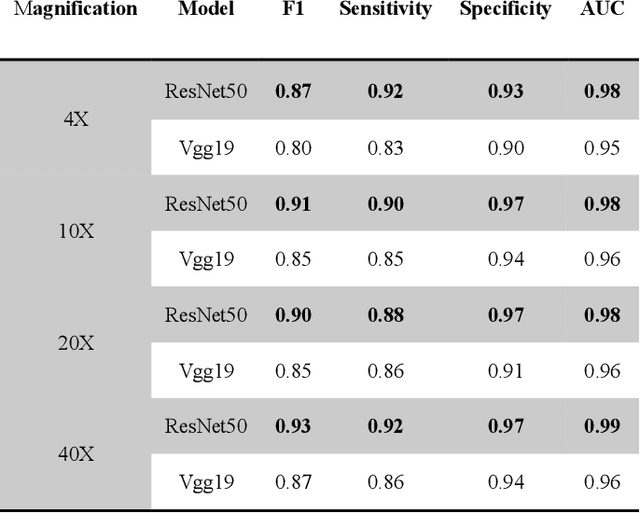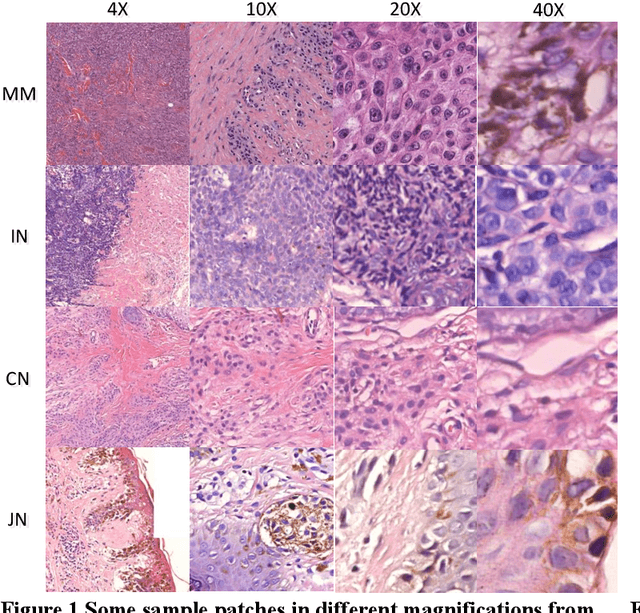Ke Zuo
Interpretable Classification from Skin Cancer Histology Slides Using Deep Learning: A Retrospective Multicenter Study
Apr 12, 2019



Abstract:For diagnosing melanoma, hematoxylin and eosin (H&E) stained tissue slides remains the gold standard. These images contain quantitative information in different magnifications. In the present study, we investigated whether deep convolutional neural networks can extract structural features of complex tissues directly from these massive size images in a patched way. In order to face the challenge arise from morphological diversity in histopathological slides, we built a multicenter database of 2241 digital whole-slide images from 1321 patients from 2008 to 2018. We trained both ResNet50 and Vgg19 using over 9.95 million patches by transferring learning, and test performance with two kinds of critical classifications: malignant melanomas versus benign nevi in separate and mixed magnification; and distinguish among nevi in maximum magnification. The CNNs achieves superior performance across both tasks, demonstrating an AI capable of classifying skin cancer in the analysis from histopathological images. For making the classifications reasonable, the visualization of CNN representations is furthermore used to identify cells between melanoma and nevi. Regions of interest (ROI) are also located which are significantly helpful, giving pathologists more support of correctly diagnosis.
 Add to Chrome
Add to Chrome Add to Firefox
Add to Firefox Add to Edge
Add to Edge